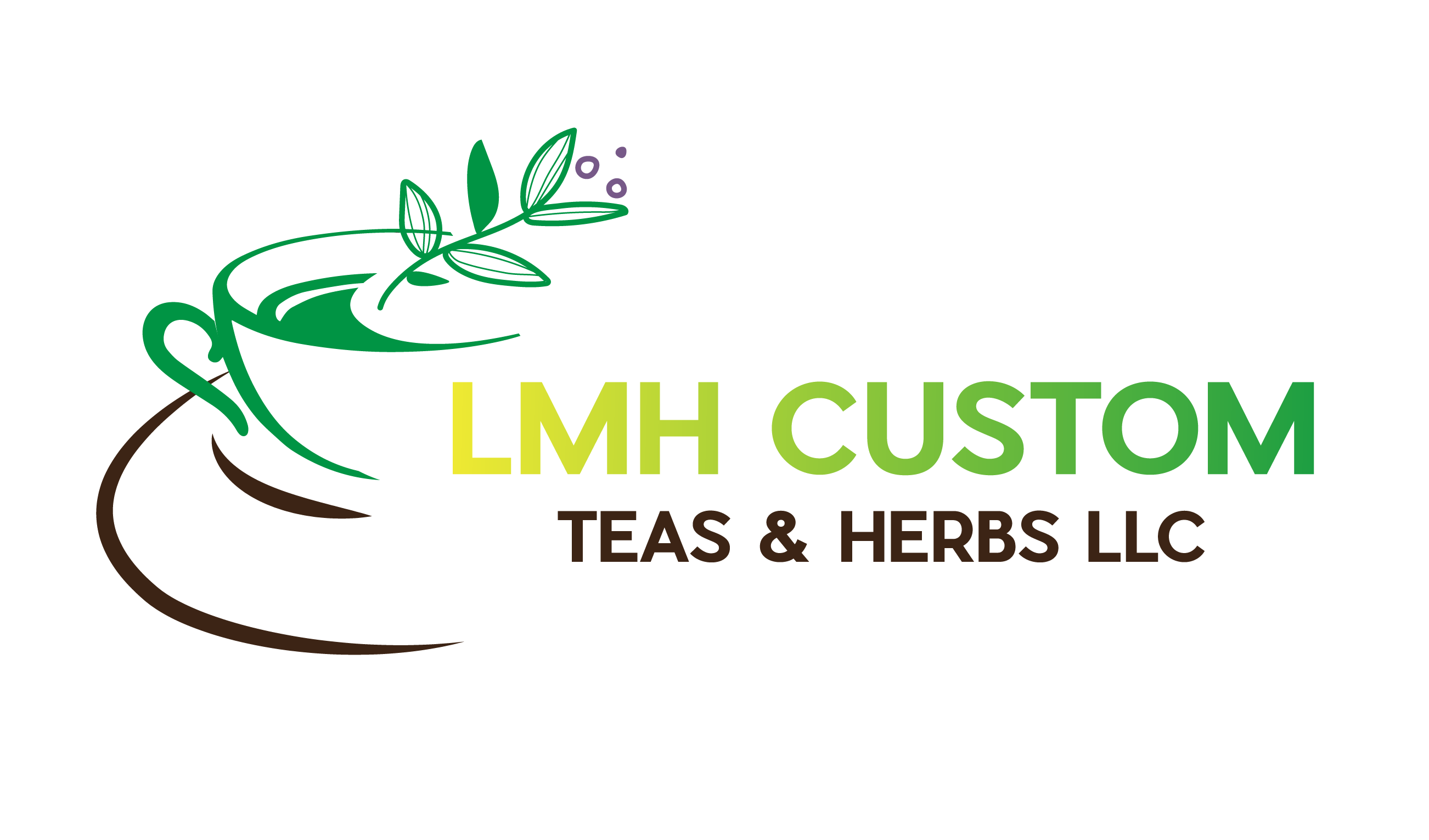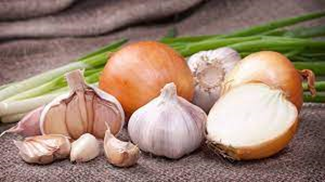It’s that time of the year again! When the weather changes it can cause a significant change in your lifestyle. Many of us may be trying at-home remedies or trying to discover the best tea to help manage seasonal allergies. You may think of keeping certain foods or drinks out of your diet to avoid an adverse reaction. But the connection between seasonal allergies and food is limited to a few groups of foods known as cross-reactive foods that are often associated with birch, ragweed, or mugwort. Here is the complete guide from LMH Custom Teas & Herbs about the best teas to ease the impacts of seasonal allergies.
Nettle
Nettle is a great source of vitamins A, C, E, B1, B2, B3, and B5, and minerals, including iron and calcium. It has a long history of supporting upper respiratory health, healthy prostate function, and a healthy immune response to allergens. It is believed that the anti-inflammatory effects of Nettle are what make it such an effective support for hay fever. More studies are needed to assess the effectiveness of the reduction of symptoms such as runny nose, sneezing, congestion, and itchy watery eyes.
Chamomile
Chamomile helps to soothe the nervous system, which in turn can help our bodies deal with the stress brought on by certain seasonal allergies. Recognized throughout the world as a natural antihistamine, chamomile has the ability to prevent histamine release from mast cells. 1-2 cups of chamomile tea per day, sweetened with a little local honey, can help reduce the impacts of many common allergens. PRECAUTIONARY NOTE: While there is evidence that chamomile may be good for hay fever sufferers, those who develop symptoms when exposed to ragweed pollen may have sensitivity to chamomile tea. Chamomile has proteins that are similar to those found in ragweed which may cause reactions.
Tulsi-Holy Basil
Holy Basil helps maintain the balance of the body’s energy systems and in addition, it can provide a sense of ease.* It’s one of the most highly regarded herbs in India and is called Holy for a reason. Among the various spiritual properties of this spicy basil, it also boasts a laundry list of cognitive and physical supporting properties. As an anti-inflammatory, it acts as a wonderful assist in the negative impacts of allergy histamine response. Its potent adaptogenic impacts help support the physiological stress the body endures when seasonal allergies flare up. The antitussive impacts of holy basil help to treat cough and can suppress that pesky cough that comes from the throat-tickling effects of a runny nose and inflamed lymph nodes. The phytochemical content and bioactive compounds of this powerhouse herb are perfect for seasonal allergy relief and year-round support for a wealth of other ailments.
Ginger
The anti-inflammatory effects can help combat the inflammatory responses that seasonal allergies can produce in the body from its antioxidative, and anti-inflammatory phytochemical compounds. Ginger boasts an excess of health benefits beyond its anti-inflammatory properties. Weight loss support, brain health, digestive health , and more.
Citrus Fruits, Tomatoes, Pineapple
The Vitamin C found in citrus fruits, tomatoes, and other fruits and vegetables not only helps combat the common cold by boosting the immune system, it can also help decrease the discomforts of allergic Rhinitis=the irritation to the upper respiratory tract caused by the pollen of blooming flowers. The bromelaine in Pineapple is especially effective. To discover more foods that can help support allergy relief, check out this article.
Alliums
Allium is the Latin word for Garlic. But also refers to other similar items such as onions, leeks, shallots, chives, scallions green onions, scapes and other onion like veggies and herbs. A healthline article explains: “Onions are an excellent natural source of quercetin, a bioflavonoid you may have seen sold on its own as a dietary supplement. Some research suggests that quercetin acts as a natural antihistamine, reducing the symptoms of seasonal allergies. … Raw red onions have the highest concentration of quercetin, followed by white onions and scallions. Cooking reduces the quercetin content of onions, so for maximum impact, eat onions raw. You might try them in salads, in dips (like guacamole), or as sandwich toppings.”
In this Canadian Pharmacy Online article: You will find many uses and more information, including sourced articles and studies about the other benefits of Aliums such as immune boosting, infection-fighting, anti-inflammatory, and anti-oxidant content that helps cancer-causing free radicals in the body to be reduced, heart health, prostate health, and lowering blood pressure and so much more.
Try Our Teas
The blooming of spring and summertime and the colorful leaf litter in fall can be a beautiful thing to behold. When it comes to your allergy responses to these seasons, they can become a beautiful headache…literally. Don’t let an uncontrollable body response rule your seasons. Take charge of your health and use the tools listed above to help ease your symptoms and support your body. The teas at LMH Custom Teas & Herbs use every one of the herbs and spices listed above and here in this article in their tea blends. Want a custom blend? Just make a note of exactly what you want Here in the checkout page and our private chef and tea blender will get you taken care of. Please understand that the items above are not meant to replace any treatment for seasonal allergies, but they can help as part of your overall lifestyle support for your body and mind.
Contact Us
Get in touch with us today to learn more about our tea blends and how they can help you with your seasonal allergies. You can contact us by filling out the contact form on our website.
For General Information on Hay Fever:
https://www.mayoclinic.org/diseases-conditions/hay-fever/symptoms-causes/syc-20373039?utm_source=Google&utm_medium=abstract&utm_content=Allergic-rhinitis&utm_campaign=Knowledge-panel
Anti-Histamine Supporting Herbs
(We carry over 75% of the listed items and will help you find someone who does have the ones that we don’t keep in stock)
https://www.acufinder.com/Acupuncture+Information/Detail/Natural+Antihistamine+Herbs
https://www.medicalnewstoday.com/articles/323276
LMH Tea Support List
Allergies Generic
Allergy Relief-Breakfast Blend
Organic Chamomile, Organic Nettle Leaf, LMH/Organic Thyme, Organic Gunpowder Green Tea, LMH/Organic Lemon Balm, Organic Fennel, Organic Hibiscus Petals, LMH/Organic Pansies, Organic Ginger Root, Organic Bay Leaf, Organic Citric Acid
Cold & Flu Season
Organic Mullein, Organic Lemon Myrtle, Organic Echinacea, Organic Orange Peel, Organic Ginger, Organic Marshmallow Root, Organic Elderberry, Organic Citric Acid
Complete Chakra Flow -Moon Cycle Support
Organic Chamomile, LMH/Organic Basil (Leaf/Bud), LMH/Organic Lavender (Leaf/Bud), LMH/Organic Sage (Leaf/Bud), LMH/Organic Red Clover (Leaf/flower), Organic Raspberry Leaf, Organic Green Tea, Organic Hibiscus Flower, Organic Nettles
Immune-Support
Organic Chamomile, LMH/Organic Basil (Leaf/Bud), LMH/Organic Lavender (Leaf/Bud), LMH/Organic Sage (Leaf/Bud), LMH/Organic Red Clover (Leaf/flower), Organic Raspberry Leaf, Organic Green Tea, Organic Hibiscus Flower, Organic Nettles
Custom Blends-Premium
(notate the blend you want in the notes section at checkout)
Soothing Green Blend
LMH Spanish Lavender Leaf, Organic Nettle, Organic Moringa Leaf, LMH Basil (leaf/Bud) LMH Viola/Pansy, Organic Chamomile, Organic Gunpowder Green Tea
Allergy Ease
Organic Red Rooibos, Organic Ginger, LMH Lemonbalm, Organic Nettle, LMH Peppermint, Organic Elderberry (raspberry or strawberry would be nice alternatives as well) Organic Citric Acid
Anti-Histamine-Tropical
Organic Stinging Nettle, Organic Passion Fruit Powder, Organic Guava Powder, Organic Turmeric
Burning Bright Breakfast Blend
Organic Gunpowder Green Tea, LMH Basil, Organic Nettle, Organic Thistle
Throat Soothe
Organic anise, Organic lemon Myrtle, Organic fennel seeds Organic Elderberry, Organic Cinnamon, Organic orange peel, Organic echinacea, Organic marshmallow root, organic citric acid
Rise Up
Organic Toasted Quinoa, Organic Nettle Leaf, Organic Thistle, Organic Himalayan White Tea, Organic Moringa Leaf, Organic chamomile flower
Fruity White
Organic Himalayan White Tea, Organic passion fruit powder, Organic Mango
Grounded Awakening/Cranberry Spice
Organic Oolong Black Tea, Wild Harvested Reishi Mushroom, Organic/LMH Ginger, LMH Rose, Organic Cinnamon, Organic Hibiscus
Cinnamon Reishi
Organic Cinnamon, Wild Harvested Reishi Mushroom
Apple Spice
Organic Apple, Organic Chamomile, Organic Hibiscus, Organic Cinnamon, Organic Nutmeg, Organic Citrus
Mint Chocolate Chip
Organic Cocoa, LMH Mint, LMH Basil, LMH Lemonbalm
(optional: add oolong)
Coco Berry Burst
Organic Cocoa, Organic Strawberry, Organic Hibiscus, Organic Himalayan White Tea
Focused Morning Bliss
Organic Cocoa, Organic Moringa, Organic/LMH Mint, Organic/LMH Basil, Sustainably Foraged Reishi Mushrooms
Tropical Green
Organic Gunpowder Green Tea, Organic Guava Powder, Organic Cinnamon, Organic Ginger
Earthen Dreamscapes
Organic Nettle, LMH Lemon balm, LMH Sage Flower, LMH Lavender Buds, LMH French Lavender Leaf , LMH Mint, LMH white clover petals
Healing Release
Organic Cinnamon, LMH Basil, Organic Bay Leaf, Organic Clove, Wild Foraged Reishi, Organic Moringa, Organic Nettle, LMH Rose
Clear & Bright
Organic Gunpowder Green Tea, Organic Nettle, Organic Flax Seed, Organic Ginger Root, Organic turmeric, LMH Fennel Fronds
LMH Red Dragon
LMH Rosemary, LMH Spearmint, Peppermint, LMH Basil, Organic Moringa, Organic Red Rooibos
LMH Ginger Dragon
LMH Rosemary, LMH Spearmint, Peppermint, LMH Basil, Organic Moringa, Organic Ginger
LMH BlackDragon
LMH Spearmint/Peppermint, Organic Moringa, Organic Oolong or Assam Black Tea
Breathe Blend
LMH Peppermint/Spearmint, LMH Sage Flower, Organic Cinnamon, Organic Clove, LMH thyme, LMH oregano
Allergy & Headache
Orange-Spice
Organic Orange Zest, Organic Cinnamon, Organic Clove, Organic Ginger, LMH/Organic
Rose-choose one: Organic Assam Black Tea/Himalayan White/Oolong Black/Gunpowder
Green/Rooibos (Include your choice of caffeine addition or for decaf notate *rooibos. Note-If you do not choose a caffeine or decaf addition, one will be chosen for you if we are unable to contact you for clarification.)
LMH Green-dragon
LMH/Organic Rosemary Leaf, LMH/Organic Spearmint Leaf, LMH/Organic Peppermint Leaf, LMH/Organic Basil Leaf, Organic Moringa Leaf, Organic Gunpowder Green Tea
Irish Breakfast
Organic Black Tea (Assam/Oolong), LMH Mints (Spearmint/Peppermint)
Manipῡra Flow-Solar Plexus Chakra – Lmhtea
Organic Thistle, Organic/LMH Ginger (Root/Leaf/Stem), Organic Chamomile, Organic Coriander, Organic Turmeric Root, Organic Cumin
Healing Winter Spice Floral
LMH/Organic Pansy/Butterfly Pea Flower, LMH/Organic Rose, Organic Moringa Leaf, Organic Nettle Leaf, Sustainably Foraged Reishi, Organic Cloves, Organic Bay Leaf, LMH/Organic Basil Leaf, Organic Cinnamon











